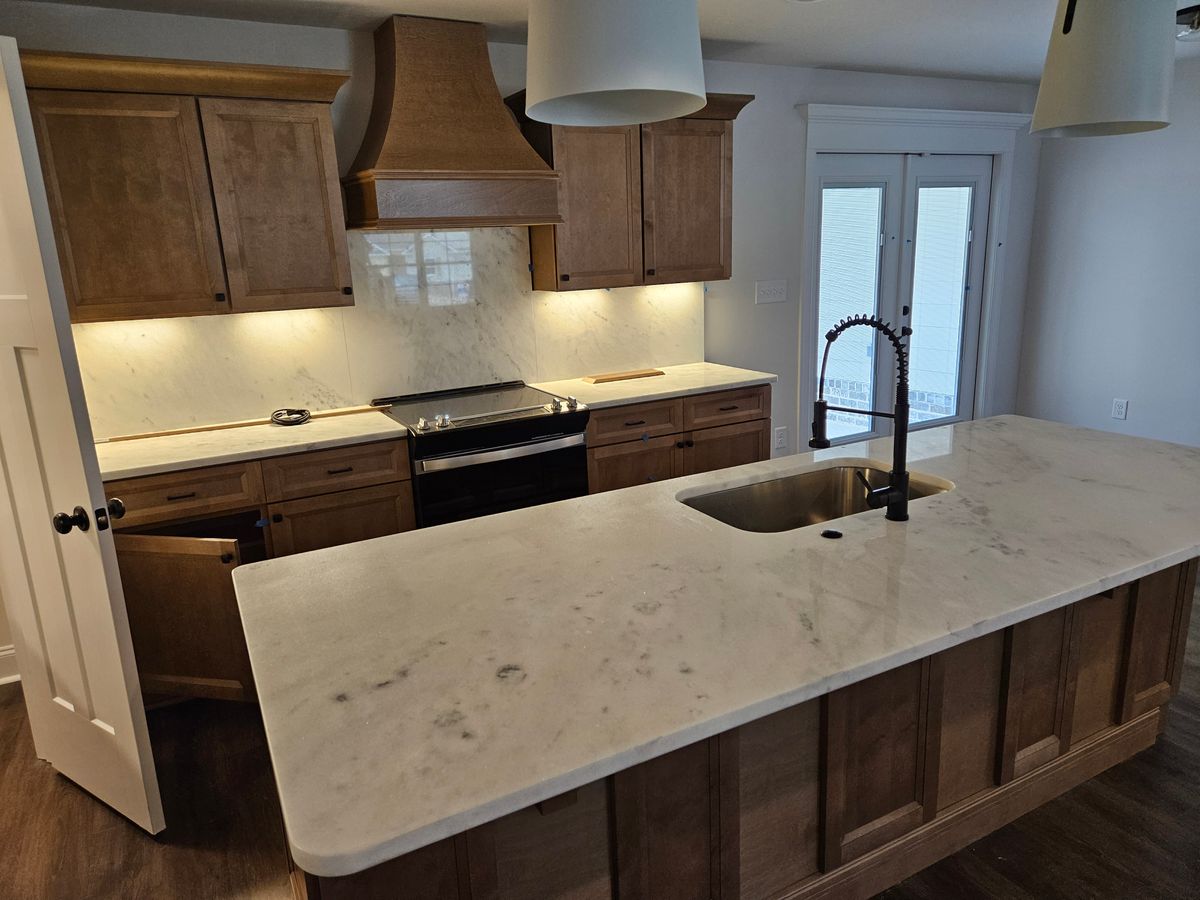Oh, to step into a kitchen that feels just right! A space where morning coffee tastes better, family dinners linger longer, and every dish feels like a culinary adventure. The dream kitchen isn't just about aesthetics; it's the beating heart of your home, a place for gathering, cooking, and making cherished memories.
Yet, for many homeowners, the vision of a stunning kitchen remodel often bumps up against a seemingly insurmountable hurdle: the cost. The perceived high price tag can lead to delayed plans, scaled-back dreams, or even abandoning the project altogether. But what if we told you that your beautiful, functional kitchen is achievable, even with a realistic budget? This isn't just about scrimping; it's about smart financial planning. This post will go beyond just setting an initial budget to explore various financing options, showing how a comprehensive financial strategy can turn those renovation dreams into a tangible reality.
Understanding Your Starting Point: Savings First
Before exploring borrowing options, let's talk about the ideal scenario: funding your kitchen remodel with cash. Using your savings offers unparalleled benefits, primarily avoiding interest payments and the burden of new debt. This means every dollar you spend goes directly into your kitchen, not into a lender's pocket.
Start by honestly assessing your current savings. How much can you realistically contribute to your kitchen remodel without depleting your emergency fund or jeopardizing other essential financial goals? A good rule of thumb is to ensure you retain at least three to six months of living expenses in an accessible savings account.
If you don't have enough saved, consider a dedicated savings strategy. Set up a separate savings account specifically for your kitchen project. Look for ways to cut discretionary spending – daily coffees, eating out, impulse buys – and redirect those funds. Even a short-term side hustle or selling unused items can quickly boost your renovation fund. Building a solid savings foundation sets a responsible tone and can significantly reduce your reliance on borrowed money, making your remodel much more affordable in the long run.
Leveraging Your Home's Value: Home Equity Loans & HELOCs
Your home isn't just a place to live; it's a significant asset that can help finance your kitchen remodel. One of the most popular ways to leverage this asset is through home equity. Simply put, home equity is the difference between your home's current market value and the outstanding balance on your mortgage. As you pay down your mortgage and your home appreciates in value, your equity grows.
Home Equity Loan (HEL): A Home Equity Loan provides a lump sum of money, making it ideal for a defined kitchen remodel project with a clear, upfront cost. These loans typically come with a fixed interest rate, meaning your monthly payments remain consistent throughout the loan term. Because a HEL is secured by your home, you'll often find lower interest rates compared to unsecured loan options. This can translate to significant savings over the life of the loan.
Home Equity Line of Credit (HELOC): A Home Equity Line of Credit, or HELOC, operates more like a revolving line of credit, similar to a credit card but with significantly lower interest rates. You're approved for a maximum amount, but you only borrow and pay interest on the money you actually use. This flexibility makes HELOCs excellent for kitchen remodels where costs might fluctuate, or the project is phased over time. You can draw funds as needed during a "draw period" and then repay during a "repayment period."
While attractive, it's crucial to remember that both HELs and HELOCs use your home as collateral. This means if you default on the loan, your home could be at risk. Lenders will also assess your credit score, debt-to-income ratio, and the amount of equity you have to determine eligibility and interest rates.
Unsecured Borrowing: Personal Loans
If you don't have significant home equity, or prefer not to use your home as collateral, a personal loan can be a viable option for financing your kitchen remodel. Personal loans are generally unsecured, meaning they aren't backed by an asset like your home or car.
One of the key benefits of personal loans is their relatively fast approval times, often much quicker than home equity options. They also typically come with a fixed interest rate and predictable monthly payments over a set loan term, making budgeting straightforward. This can be particularly appealing for smaller to mid-sized kitchen renovation projects where you need a specific amount of money and want a clear repayment schedule.
However, because personal loans are unsecured, lenders take on more risk. This generally translates to higher interest rates compared to secured loans like Home Equity Loans. Your credit score will play a significant role in the interest rate you're offered; the higher your score, the more favorable your rate is likely to be. While a good option for flexibility and speed, always compare interest rates and fees from multiple lenders to ensure you're getting the best possible terms.
Proceed with Caution: Credit Cards (and Smart Usage)
When discussing financing a kitchen remodel, credit cards are a topic that demands significant caution. While they offer convenience, their typically high interest rates can quickly turn a dream kitchen into a financial nightmare if not managed meticulously. For a substantial renovation project, relying solely on high-interest credit cards is generally ill-advised due to the rapid accumulation of interest charges.
However, there are very specific scenarios where credit cards could play a limited, strategic role:
0% Introductory APR Offers: Some credit cards offer a 0% introductory Annual Percentage Rate (APR) for a specific period (e.g., 12-18 months). If you are absolutely confident you can pay off the entire balance before this promotional period ends, this can effectively act as a short-term, interest-free loan. This might be suitable for purchasing specific appliances or materials if you have a lump sum payment coming soon.
Small, Manageable Expenses: For very minor updates, unexpected small costs that arise during the remodel, or purchasing smaller items like hardware, a credit card can be convenient, provided you pay off the balance immediately and in full.
It's crucial to understand the major risks: carrying a balance on a high-interest credit card can lead to rapidly accumulating debt, making your kitchen remodel exponentially more expensive. It can also negatively impact your credit score if balances are high or payments are missed. Always have a clear repayment plan before using a credit card for anything beyond what you can pay off within a single billing cycle.
Beyond Loans: Other Creative Financing & Budgeting Tips
Beyond traditional loans and lines of credit, there are a few other avenues and strategic budgeting tips to consider for your kitchen remodel:
Cash-Out Refinance: If you have significant equity and current mortgage interest rates are low (or you're planning to refinance anyway), a cash-out refinance allows you to replace your existing mortgage with a new, larger one. You then receive the difference between your old and new mortgage in cash, which can be used for your renovation. This rolls your remodel cost into your primary mortgage, often at a lower interest rate, but it also extends the term of the debt.
Contractor Financing: Many kitchen remodel contractors partner with third-party lenders to offer their own financing plans. While this can be a convenient "one-stop shop," it's essential to scrutinize the terms, interest rates, and fees carefully. Sometimes these options have higher rates than what you might secure independently.
"Pay-as-you-go" Approach: For those who prefer to avoid debt altogether, a phased approach can be effective. Break your remodel into manageable stages (e.g., demolition, cabinet installation, countertop installation, appliance purchase). Fund each stage with saved cash before moving to the next. This allows you to avoid interest, but the remodel will naturally take longer.
Grants and Rebates: Don't overlook potential grants or rebates, especially if your kitchen remodel includes energy-efficient upgrades. Check with your local government, utility companies, or even appliance manufacturers for programs that might offer financial incentives for things like energy-star appliances, new windows, or improved insulation.
Making the Right Choice for Your Kitchen (and Wallet)
As we've explored, numerous financing options can bring your dream kitchen to life, each with its own set of pros and cons. From leveraging your home's equity with a Home Equity Loan or HELOC to the flexibility of a personal loan, or even strategically using credit cards, the best choice isn't universal.
The optimal financing path for your kitchen remodel depends entirely on your individual financial health, including your credit score, existing home equity, personal risk tolerance, and the overall scope of your renovation. Are you looking for the lowest possible interest rate, even if it means securing the loan with your home? Or do you prioritize flexibility and speed, even if it comes with a slightly higher rate?
The key is to do your homework. Research each option thoroughly, compare offers from multiple lenders, and don't hesitate to consult with a trusted financial advisor. They can provide personalized guidance to help you navigate the complexities and choose the path that aligns best with both your financial goals and your vision for that perfect kitchen. With careful planning and the right financing strategy, your dream kitchen is not just a fantasy – it's a beautiful, attainable reality waiting to be cooked up!

